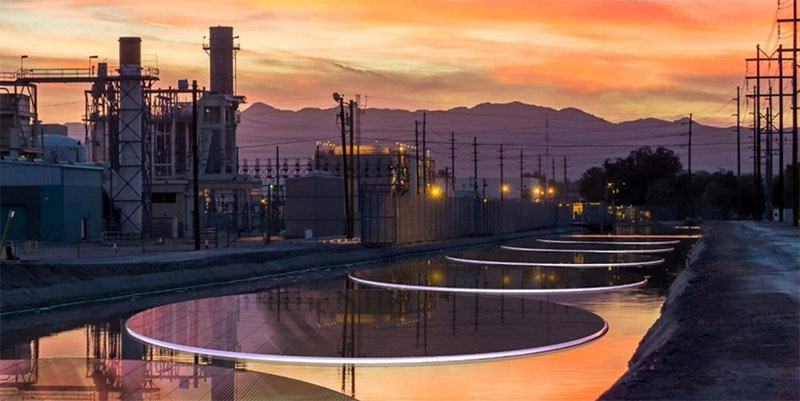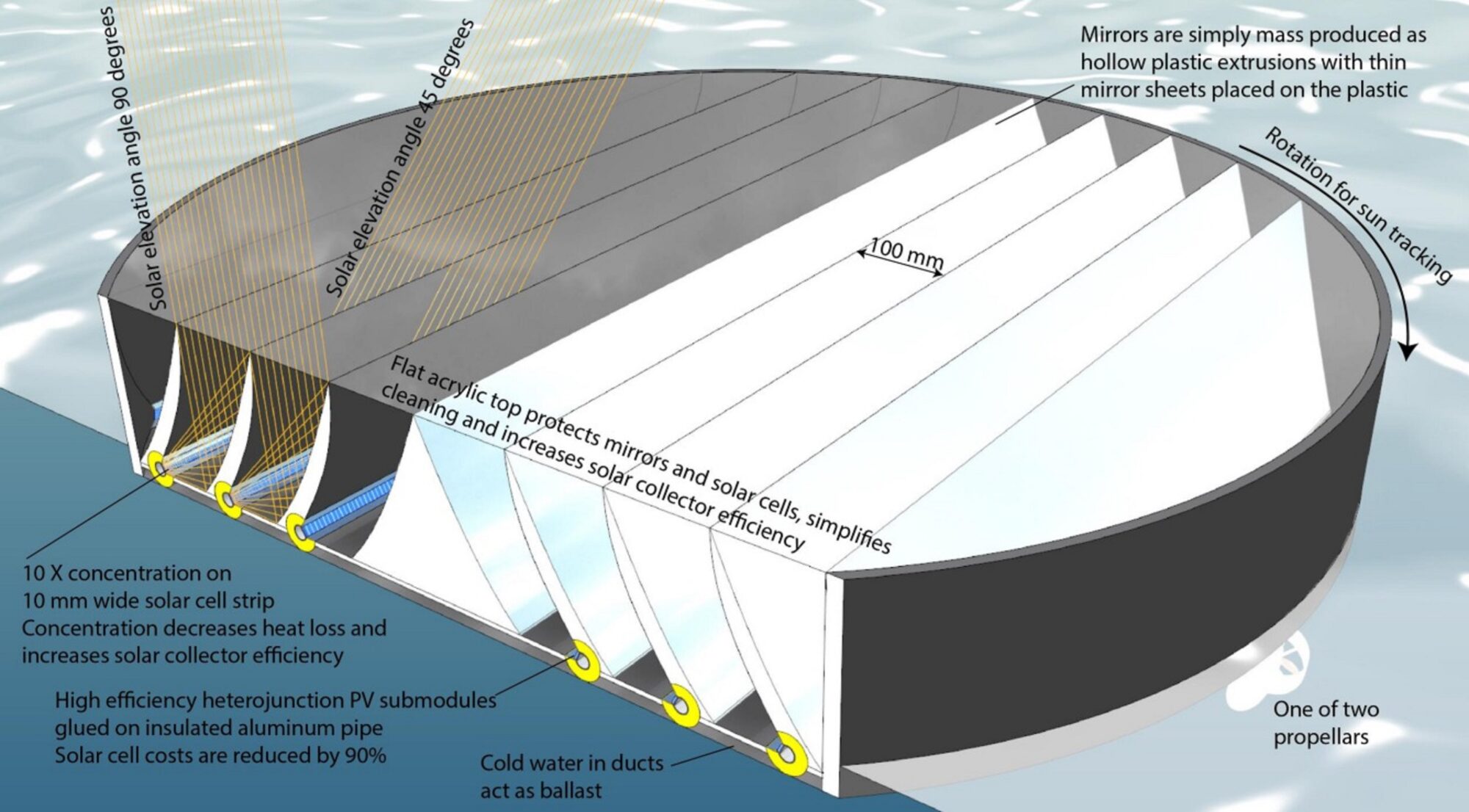| May 03, 2023 |
Carbon capture using sunlight and mirrors
|
|
(Nanowerk News) Researchers at the Norwegian science institute SINTEF are currently working to construct a pilot solar power plant that can be floated on water. The plant will utilise a technology that captures so-called concentrated sunlight.
|
|
“The concept is based on standard solar radiation technology, but it also uses mirrors to concentrate the sunlight and direct it onto ultra-efficient solar panels”, explains Martin Bellmann, who is a Research Scientist at SINTEF.
|
|
The plant is constructed in such a way that it can be rotated in the water using propellers. This will enable the solar panels to track the sun and thus capture as much sunlight as possible.
|
 |
| This is how researchers envisage the floating solar panel array installed in an industrial facility. (Illustration: Svalin Solar)
|
Generating electricity and heat
|
|
The concentrated sunlight will generate a lot of heat. This will be collected by the plant using a heat transfer fluid flowing in pipes linked to the solar panels.
|
|
“In current floating solar energy plants this heat is lost because they use water to cool the solar panels”, says Bellmann. “But this plant is unique because it retains the heat as well as the electricity”, he explains.
|
Combined with a heat pump
|
|
The electricity and heat generated by the solar energy plant will be used in a carbon capture facility. However, since the heat from the solar energy plant does not achieve a sufficiently high temperature, it will be connected to a heat pump that will also be developed by SINTEF.
|
|
“The aim of the pilot is to demonstrate a solar-assisted carbon capture system that either entirely or in part generates the thermal energy needed for gas separation”, says Bellmann.
|
 |
| Diagram illustrating the concept of a floating solar energy plant that generates both electricity and heat. It is installed with parabolic mirrors and ultra-efficient solar panels. (Illustration: SINTEF) (click on image to enlarge)
|
Facilitating carbon capture
|
|
SINTEF is planning to develop the solar energy plant in collaboration with the Norwegian company Svalin Solar, which currently manufactures a small-scale version of a similar facility.
|
|
“We’re currently working on the design and upscaling of the Svalin Solar plant”, says Bellmann. “We will soon be purchasing components and are hoping to construct a pilot facility this summer”, he says.
|
|
“Initially, the plant will be tested on dry land as part of an existing carbon capture facility that SINTEF operates at Tiller, just outside Trondheim. This is where we will demonstrate the potential of the system”, says Bellmann.
|
To the aid of European heavy industry
|
|
However, the long-term aim of the project, called TRINEFLEX, is to develop systems that will assist European heavy industry to become more sustainable.
|
|
“This is a major, four-year, EU-funded project that was launched in September 2022”, explains Bellmann. “Our main aim is to enable heavy industry to implement transition and achieve its sustainability goals by integrating renewable energy and digitalisation. Heavy industry operates with a relatively large energy requirement that will be met by solar energy from plants such as this that generate both electricity and heat”, he says.
|
|
The project is operating with 28 partners, including SINTEF, and a budget of EUR 19.3 million.
|
